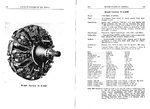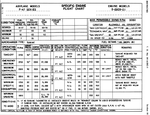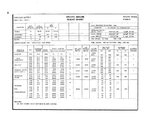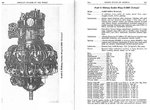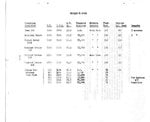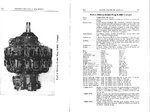Navigation
Install the app
How to install the app on iOS
Follow along with the video below to see how to install our site as a web app on your home screen.
Note: This feature may not be available in some browsers.
More options
You are using an out of date browser. It may not display this or other websites correctly.
You should upgrade or use an alternative browser.
You should upgrade or use an alternative browser.
R2800 vs R3350
- Thread starter krieghund
- Start date
Ad: This forum contains affiliate links to products on Amazon and eBay. More information in Terms and rules
More options
Who Replied?Colin1
Senior Master Sergeant
Good info Krieghund
do you have a similar comparison for the C series R-2800, which was a sizeably different engine to its predecessors and a little closer in comparison with the R-3350? As far as I can gather there's no time-line issue there.
do you have a similar comparison for the C series R-2800, which was a sizeably different engine to its predecessors and a little closer in comparison with the R-3350? As far as I can gather there's no time-line issue there.
Shortround6
Major General
I believe the R-2800 C didn't go into production until (or at least don't show up in any real numbers) until late summer or fall of 1944.
maybe it could have been pushed but with about 200 B-29s built in 1943 you need a lot of pushing.
maybe it could have been pushed but with about 200 B-29s built in 1943 you need a lot of pushing.
Colin1
Senior Master Sergeant
Pratt Witney took a big risk on the C series
building out a complete new plant specifically for the type, whilst the type itself was still something of an unknown quantity. I forget the location, will check when I get home.
The plant's construction commenced in early to mid-1942 so dash Cs coming off the line around summer or autumn of the following year seems realistic.
building out a complete new plant specifically for the type, whilst the type itself was still something of an unknown quantity. I forget the location, will check when I get home.
The plant's construction commenced in early to mid-1942 so dash Cs coming off the line around summer or autumn of the following year seems realistic.
Last edited:
Shortround6
Major General
Try this if you haven't seen it before:
http://www.enginehistory.org/References/WWII Eng Production.pdf
http://www.enginehistory.org/References/WWII Eng Production.pdf
- Thread starter
- #7
Colin1
Senior Master Sergeant
So
5th R-3350-BA accepted October 1939
5th R-2800-A accepted March 1940
5th R-2800-C accepted August 1943
5th R-3350-BB accepted December 1943
Are '5th engines' production engines?
Both the C and BB series look a long way too late for service testing but the BB would be easier to retrofit, with a Wright powerplant already in place
5th R-3350-BA accepted October 1939
5th R-2800-A accepted March 1940
5th R-2800-C accepted August 1943
5th R-3350-BB accepted December 1943
Are '5th engines' production engines?
Both the C and BB series look a long way too late for service testing but the BB would be easier to retrofit, with a Wright powerplant already in place
Shortround6
Major General
So
5th R-3350-BA accepted October 1939
5th R-2800-A accepted March 1940
5th R-2800-C accepted August 1943
5th R-3350-BB accepted December 1943
Are '5th engines' production engines?
Both the C and BB series look a long way too late for service testing but the BB would be easier to retrofit, with a Wright powerplant already in place
The "5th" production engine is take as a bench mark so that one or two early examples don't skew the introduction rate too badly, although in this case it does't work so well.
davebender
1st Lieutenant
1937. R-3350 engine first run.I'd rather use the R2800 than the R3350. those engines were prone to failure
1937. R-2800 engine first run.
As things turned out the R-2800 engine was relatively trouble free, allowing it to enter production during 1940 rated at 1,850hp. Development potential was so good that the R-2800 engine was producing 2,500hp within a few years.
You don't get hindsight in the real world. From a 1937 perspective, the R-2800 engine could have turned out to be a lemon. The R-3350 provided insurance that the U.S. Army Air Corps would have at least 1 powerful air cooled radial engine.
robwkamm
Airman 1st Class
i heard the problem with the 3350 was the rediculously long intakes. it would lean out cylinders on the early versions till fuel injection. thats was the cause of fires mainly on start up. puddled fuel would go up like a bomb. curtiss wright also was not a good trouble shooting company. they would just thow bigger parts at it and not really fix the problems. just mask them. i do admire the turbo compound versions. probably one of the most efficient piston engines ever made. a little to late. the company never really recovered from bad judgement and trouble shooting. this is all from memory and if im wrong please correct me. i would love to have r-3350-tc for my collection. anyone selling a cheap core? LOL
Colin1
Senior Master Sergeant
The problem with the intakes was the difference in the throw between the front cylinders and the rear bank and the inherent difference this inferred on mass airflow. This was solved when the Bendix (or Chandler Evans, in some cases) carburation was replaced with Bendix Stromberg injection units (two per powerplant, one feeding each bank) at 500psi injection pressure.I heard the problem with the 3350 was the ridiculously long intakes, it would lean out cylinders on the early versions till fuel injection.
Curtiss-Wright also was not a good trouble-shooting company. They would just thow bigger parts at it and not really fix the problems, just mask them. I do admire the turbo compound versions, probably one of the most efficient piston engines ever made, a little too late. The company never really recovered from bad judgement and trouble-shooting
Bosch also developed a system for the R-3350.
Whilst not offering any hike in power, direct fuel injection did negate the induction fire issue.
The R-3350 was the first time Wright had not used GE supercharging, going instead with an in-house design. There was little wrong with their product, they learned the same lessons Rolls-Royce did with elbows to inlet eyes; early units incurred a 7 1/2% efficiency penalty but with a modification this dropped to less than 1%. Other than that there is nothing to suggest that Wright's gear-driven supercharger wasn't as good as anything else currently being offered anywhere in the world.
The Truman Committee did look at the R-3350 wrt the XB-29 program and the conclusion was that problems with the XB-29 could be blamed on the R-3350, cases of poor workmanship and QC were cited. In my own opinion, this struck me as accurate but not all-embracing; an oddity of the B-29 fuel system allowed fuel to be siphoned from the filler cap into the leading edge under certain conditions. The point of ignition was instrument tubing also in the leading edge that was ignited by contact with the exhaust system.
This is what happened in the crash of XB-29 No 2, an engine fire in No 1 nacelle was successfully extinguished but a second fire in No 2 nacelle was not; the second fire was found to be a major fire that came about as a result of the initial fire. The accident quite rightly grounded the XB-29 program albeit at a critical stage of the war, but it also grounded everything else powered by an R-3350. In all fairness, this is easy to criticise with the benefit of hindsight.
The use of bigger parts did actually solve problems. Overspeeding due to slow governor response was solved by using larger oil galleries in the nose section which in turn required a larger scavenger pump.
Eventual experience taught the B-29 team (and crews) that cowl flap position was critical and that loose-fitting or damaged baffling would aggravate the already-marginal cooling situation.
Hi all interesting discussion...
As far as I know the original concept for the "B-29" (Model 341 project) by Boeing was originally designed to be powered by 4 R-2800's. The P&W's were only dropped by Boeing in favor of the R-3350's when the AAF released the Very Long Range Bomber spec R-40B which suggests they adopted this engine to meet the more steep demands of this spec's requirements.
I also think that since Boeing used the mass produced Cyclone 9 (1820) on the B-17 and hence had experience dealing with Wright well before the Second World War broke out, that they naturally tended to favor the wright engine over that of P&W. The R-2800 engine was also in too much demand on other airframes during ww2.
As far as I know the original concept for the "B-29" (Model 341 project) by Boeing was originally designed to be powered by 4 R-2800's. The P&W's were only dropped by Boeing in favor of the R-3350's when the AAF released the Very Long Range Bomber spec R-40B which suggests they adopted this engine to meet the more steep demands of this spec's requirements.
I also think that since Boeing used the mass produced Cyclone 9 (1820) on the B-17 and hence had experience dealing with Wright well before the Second World War broke out, that they naturally tended to favor the wright engine over that of P&W. The R-2800 engine was also in too much demand on other airframes during ww2.
Colin1
Senior Master Sergeant
My sourcesAs far as I know the original concept for the "B-29" (Model 341 project) by Boeing was originally designed to be powered by 4 R-2800s. The P&W's were only dropped by Boeing in favor of the R-3350's when the AAF released the Very Long Range Bomber spec R-40B which suggests they adopted this engine to meet the more steep demands of this spec's requirements
point towards all five bids; the Boeing B-29, Lockheed B-30, Douglas B-31, Consolidated B-32 and Martin B-33 all going with the R-3350 from the outset
Rare Bear - Wikipedia, the free encyclopedia
Rare Bear, a post-war racer, replaced the R-2800 with a R-3350.
Kewl
Rare Bear, a post-war racer, replaced the R-2800 with a R-3350.
Kewl
syscom3
Pacific Historian
There were some fundemental differences between the development of the R2800 and R3350. The R2800 used traditional metals and was just an increase in size as compared to existing designs.
The R3350 used magnesium alloys in a far smaller frontal area. This is what gave problems and issues during the development of the engine, and why it took so long to get the "bugs" worked out of it.
The R3350 used magnesium alloys in a far smaller frontal area. This is what gave problems and issues during the development of the engine, and why it took so long to get the "bugs" worked out of it.
Shortround6
Major General
There were some fundemental differences between the development of the R2800 and R3350. The R2800 used traditional metals and was just an increase in size as compared to existing designs.
The R3350 used magnesium alloys in a far smaller frontal area. This is what gave problems and issues during the development of the engine, and why it took so long to get the "bugs" worked out of it.
Which R-3350 are you referring to?
The R-2800 is usually given as having a 52-53in diameter with the R-3350 having a 55-56in diameter.
I would be interested in more information about the use of magnesium in the R-3350 too. While it may very well have been used in the rear accessory cover it was not used in the crankcase which was steel. the reduction gear case might have been either aluminium or magnesium, my books don't say so far.
Colin1
Senior Master Sergeant
From what I can gatherThere were some fundamental differences between the development of the R-2800 and R-3350. The R-2800 used traditional metals and was just an increase in size as compared to existing designs
the R-3350 pretty much followed R-2600 construction details; three-piece alluminium forged casing, later replaced with a steel forging. The R-3350's bearings were silver-lead-indium and cylinders were nitralloy forged barrel type.
Pratt Witney used the same silver-lead-indium construction for their own bearings and chrome molybdenum steel cylinders. The same three-piece aluminium forged casing arrangement.
Colin1
Senior Master Sergeant
It was in fact the R-2800 that used magnesium in its construction, the reduction gearing, magneto drive, distributor drive, propeller governor drive and scavenge pump were housed in a single-piece magnesium casing.The R3350 used magnesium alloys
This is what gave problems and issues during the development of the engine, and why it took so long to get the "bugs" worked out of it.
The supercharger collector section was another magnesium casting.
No mention yet of Wright using magnesium.
Probably the biggest problem encountered by the R-3350's development curve was the use of cast heads.
Users who are viewing this thread
Total: 1 (members: 0, guests: 1)

